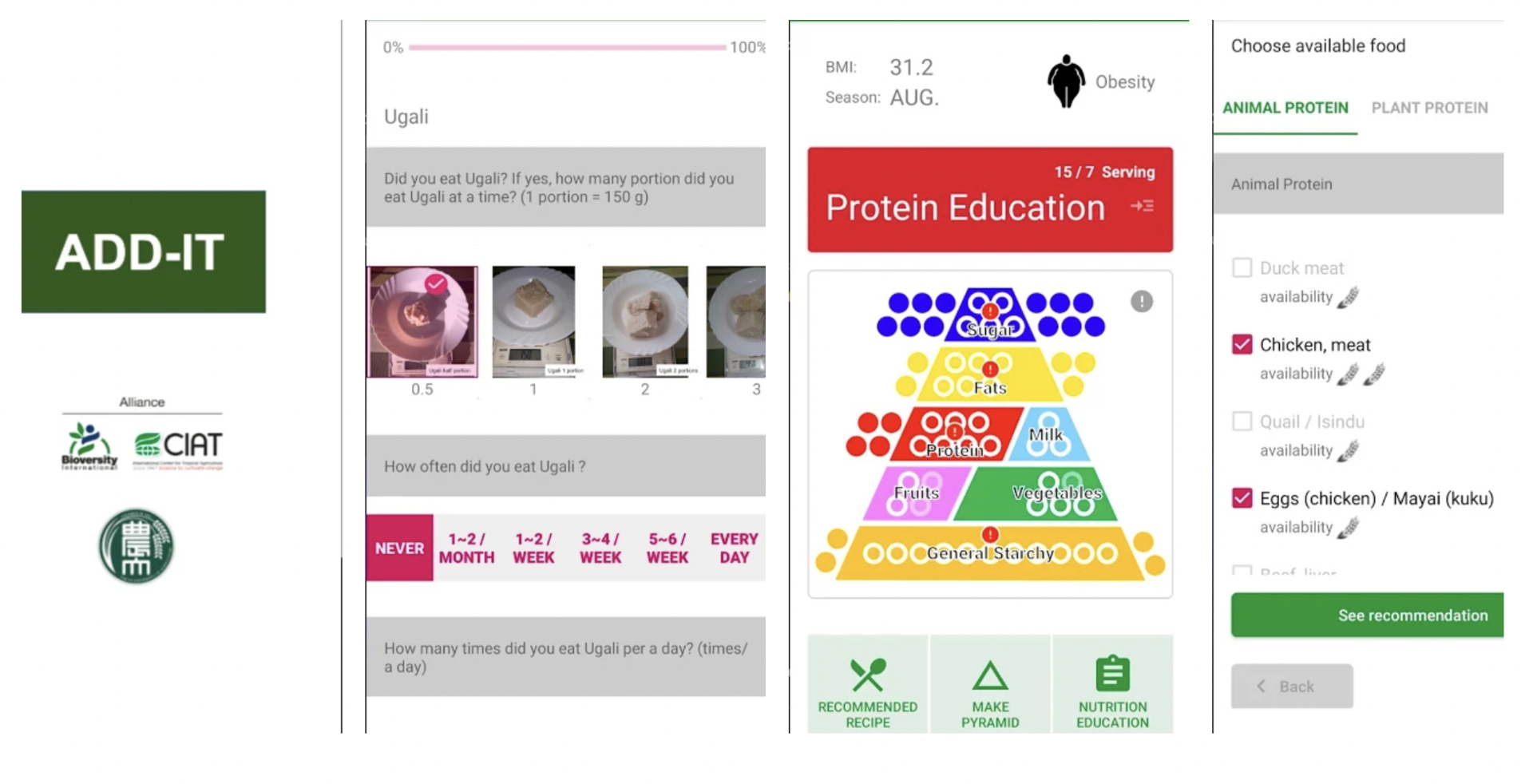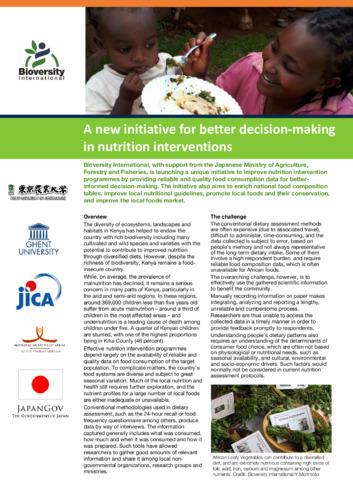Agrobiodiversity Diet Diagnosis Interventions Toolkit (ADD-IT)

ADD-IT is an application developed to improve nutrition in the African region. It uses Food Frequency Questionnere as a nutrition survey method to quickly assess people’s nutrition in the region and provide immediate feedback on nutrition and vegetable utilization.
The ADD-IT application consists of three major functions, such as dietary assessment, nutrition education and database. This mobile phone application will speed up and improve collection, processing, use and integration of food consumption data including the lesser-known foods.
The participants install the ADD-IT application and input all of their food intakes, including fruits and snacks, acquired from both the farm and the wild. The app then sends the data to a database where it is analyzed in relation to the recommended daily nutrient intakes. This analysis will clearly reveal any dietary deficiencies, and subsequently identify the locally available foods that can make up for the deficiencies; thereby offering immediate feedback for action by the user.
The tool collects data in four key areas: (1) food consumption data using diet records, and food frequency data to assess feeding habits; (2) socio-demographic data to determine socioeconomic factors that may influence food choices; (3) agrobiodiversity data to determine available flora and fauna, both cultivated and wild; and (4) environmental data to assess its influence on food availability and consumption. These will form the integrated database that will generate feedback to the users.
In what context is this tool useful?
The application is intended for use by local health workers and community health volunteers in a context where they need more information on local food systems like market data of available foods, food calendar indicating foods available in the various seasons and the nutritional value of the different food groups. ADD-IT app shows food options that are wild, cultivated and available in local markets.
Data is collected from the individuals within the communities, who will also be the immediate beneficiaries, while the cumulative feedback is useful at the community, county and national level for policy and other related development activities. The development of the tool is undergoing a rigorous process made up of four steps to ensure all factors relevant to the beneficiaries are taken into account. The process entails data collection, data analysis, feedback and action plan; all geared towards behavior change.
Results achieved
In the second year, the aim is to undertake a nutrition assessment of various foods. The research team will collect food samples that will be distributed to selected labs for assessment of their nutrient content.
Overall, the tool is contributing to stimulate use of local food resources in the regions and enhance local and regional economy, increased food security and better health, poverty alleviation, biodiversity conservation through better natural resource management and enhanced institutional linkages and capacity to carry out nutrition research.
In the future, the intent will be to expand the network to other countries in which to test the ADD-IT.
Variations on this method
No variations of this tool have yet been developed. In order to be more relevant and applicable, the tool will be region specific. It will also comprise data on food seasonality, market diversity and accessibility, income, and education levels – factors which directly determine food choice and consumption.



